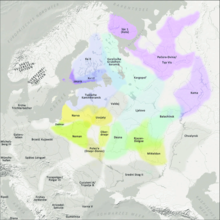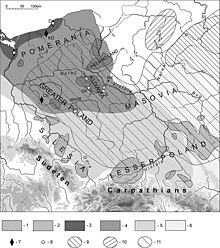
The Act of Mielnik or Union of Mielnik was an attempt to unite the Kingdom of Poland with the Grand Duchy of Lithuania in 1501. It was not ratified by the Lithuanian Seimas or by the Polish Sejm. The Act of Mielnik remained just a political project. Despite the failure to unify two countries into a single state, Poland and Lithuania were under a personal union until the Union of Lublin of 1569.

Tomas Venclova is a Lithuanian poet, prose writer, scholar, philologist and translator of literature. He is one of the five founding members of the Lithuanian Helsinki Group. In 1977, following his dissident activities, he was forced to emigrate and was deprived of his Soviet citizenship. Since 1980, he has taught Russian and Polish literature at Yale University. Considered a major figure in world literature, he has received many awards, including the Prize of Two Nations, and The Person of Tolerance of the Year Award from the Sugihara Foundation, among other honors.
The Narva culture or eastern Baltic was a European Neolithic archaeological culture in present-day Estonia, Latvia, Lithuania, Kaliningrad Oblast, and adjacent portions of Poland, Belarus and Russia. A successor of the Mesolithic Kunda culture, the Narva culture continued up to the start of the Bronze Age. The culture spanned from c. 5300 to 1750 BC. The technology was that of hunter-gatherers. The culture was named after the Narva River in Estonia.

The Dnieper Balts were a subgroup of the Balts that lived in the Dnieper river basin for millennia until the Late Middle Ages, when they were partly destroyed and partly assimilated by the Slavs by the 13th century. To the north and northeast of the Dnieper Balts were the Volga Finns, and to the southeast and south were the ancient Iranians, the Scythians.

Radvila Astikas or Astikaitis was a magnate, a member of the Astikai and founder of the Radziwiłł family. He was a member of the Lithuanian Council of Lords and one of the most influential people in the Grand Duchy of Lithuania during his lifetime.
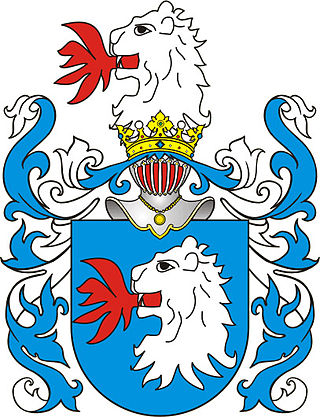
Mykolas Kęsgaila Valimantaitis was a Lithuanian nobleman from Deltuva. He established the Kęsgaila family in Samogitia, where their power rivalled that of the Grand Duke of Lithuania. Mykolas Kęsgaila was the deputy of Ukmergė (1409–1412), Elder of Samogitia, and castellan of Vilnius (1443–1448). He was a father of Jonas Kęsgaila and Mykolas Kęsgaila the Younger.
Mykolas Kęsgaila was an influential Lithuanian nobleman from the Kęsgailos family. Together with his brother Jonas Kęsgaila, Mykolas dominated the politics of the Grand Duchy of Lithuania for three decades. Mykolas Kęsgaila was Chancellor of Lithuania (1444–1476), regent of Smolensk (1450–1458) and Voivode of Vilnius (1459–1476).

Stanislovas Jonavičius Kęsgaila was a Lithuanian nobleman, son of Jonas Kęsgaila from the Kęsgaila family. Stanislovas Kęsgaila was the Elder of Samogitia (1486–1522), Grand Hetman of Lithuania (1501–1502), castellan of Trakai (1499–1522) and Vilnius (1522–1526).
Stanislovas Kęstgaila (1503–1532) was a Lithuanian nobleman, son of Stanislovas Kęsgaila from the Kęsgaila family. Stanislovas Kęstgaila was the Elder of Samogitia (1527–1532) and castellan of Trakai (1528–1532). After marriage to Anna, daughter of Stanisław Kiszka, Stanislovas was the wealthiest magnate in the Grand Duchy of Lithuania.

The Emblem of the Lithuanian Soviet Socialist Republic was adopted in 1940 by the government of the Lithuanian Soviet Socialist Republic. The emblem was designed by Vsevolodas Dobužinskis based on the State Emblem of the Soviet Union. The new coat of arms replaced the traditional coat of arms of Lithuania, known as Vytis, which was restored when Lithuania declared its independence in 1990.
History of Lithuania or Academic History of Lithuania is a thirteen-volume series of books dedicated to the history of Lithuania. Its first volume was published in 2005, and its last volume is scheduled for publication in 2011. After its completion, it will be the largest and the most comprehensive academic publication covering Lithuania's history ever released. As of 2011, five volumes had been released.
Kaimynas was a class of non-free peasants in the Grand Duchy of Lithuania before full-scale serfdom was established by the Wallach reform (1557). The term describes a former prisoner of war, who was allowed to live in a village and rent a piece of land from a noble. Peasants who lost their land because of debt or other circumstances could also become kaimynai.
The Rzucewo was a local archaeological culture of late Neolithic. It centered at the coast of the Bay of Gdansk (Danzig) and Vistula Lagoon and extended north to the Curonian Lagoon and up to Šventoji settlement in Lithuania. It is either named after the adjacent bays or after an archeological site in the village of Rzucewo (Rutzau) near Puck.
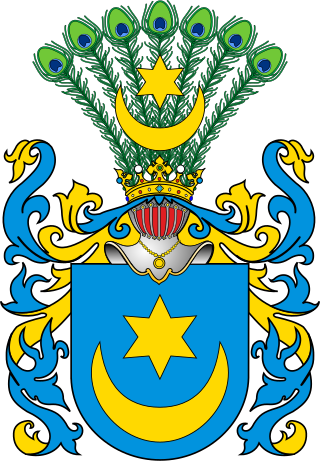
Jan Jurjewicz Zabrzeziński or Zaberezhsky was a noble of Leliwa coat of arms from the Grand Duchy of Lithuania, who achieved the height of his influence during the reign of Alexander I Jagiellon (1492–1506). He was duke's marshal (1482–1496), regent of Polatsk (1484–1496), castellan of Trakai (1492–1498), voivode of Trakai (1498–1505), and Grand Marshal of Lithuania (1498–1508). Zabrzeziński was married to Anna, daughter of Jan, elder of Brest and Hrodna.
Stanislovas Čiupurna was a Lithuanian noble, Court (1395–1407) and Grand Marshal of the Grand Duchy of Lithuania (1407–1411). As a close ally of Grand Duke Vytautas, he was one of the chief diplomats in the conflict over Samogitia with the Teutonic Knights.

Stanisław Piotrowicz Kiszka was a noble, diplomat and military commander from the Grand Duchy of Lithuania. He became the progenitor of the prominent Kiszka family. He was sent on frequent diplomatic missions to the Grand Duchy of Moscow and Kingdom of Poland. He attempted to negotiate peace during the Muscovite–Lithuanian Wars and supported a closer union between Poland and Lithuania. During the Second Muscovite–Lithuanian War (1500–03), he successfully defended Smolensk and became Grand Hetman of Lithuania until Konstanty Ostrogski escaped Russian captivity in 1507. Kiszka helped to subdue the Glinski rebellion in 1508. Shortly before his death, Kiszka also became Grand Marshal of Lithuania.
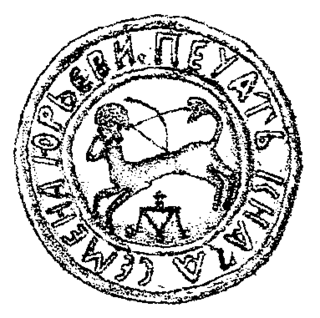
Prince Semyon Yurievich of Halshany was a noble from the Olshanski family in the Grand Duchy of Lithuania.
Petras Jonaitis Mantigirdaitis was a prominent Lithuanian noble. Grandson of Petras Mantigirdaitis, he first appeared in written sources in 1476 and reached his career high in the 1490s, when he was Voivode of Trakai (1490–97) and Grand Marshal of Lithuania (1491–97).
Lubys Cabinet was the 5th cabinet of Lithuania since 1990. It consisted of the Prime Minister and 17 government ministers.
The Brushed Pottery culture was a European Bronze Age archaeological culture found in present-day eastern Lithuania, Belarus, and southeastern Latvia. It succeeded the Neolithic Narva culture. It got its name from its characteristic flat-bottomed pottery, the outer surface of which is generally brushed with strokes, believed to be applied with bundles of straw or grass during pottery making.
